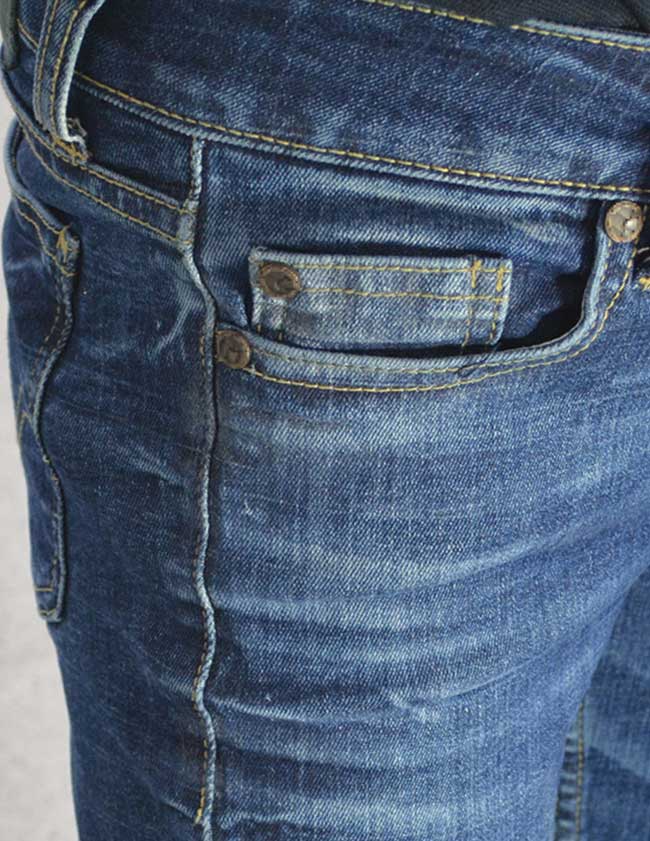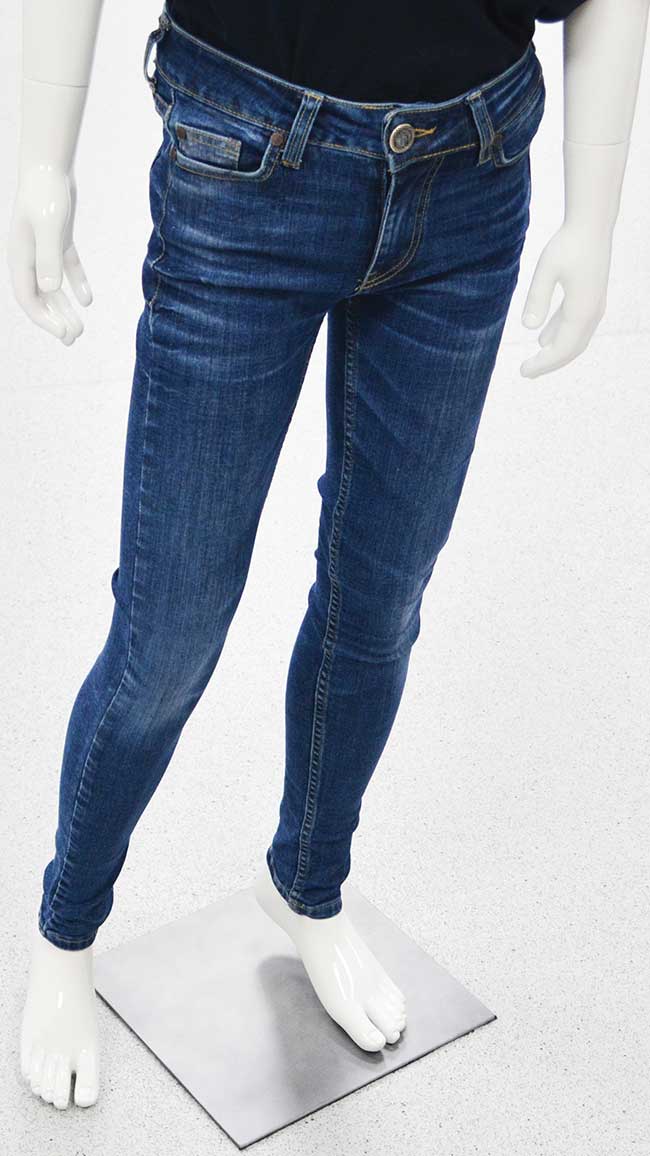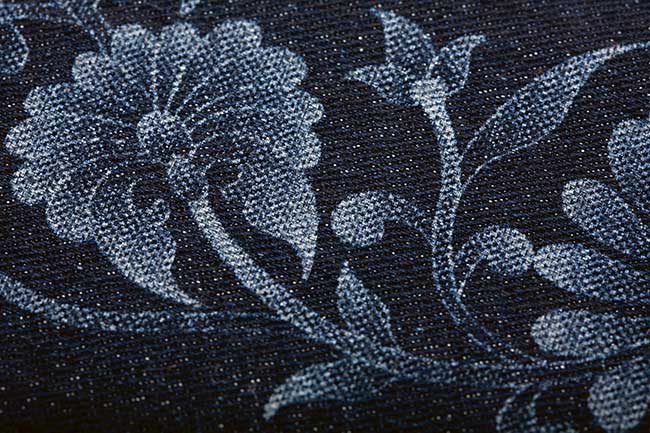Patterned, tattered, and faded denim jeans are popular worldwide, with young and old. While there are many ways to achieve the trendy look — from stonewashing and bleaching to do-it-yourself techniques — many of the world’s major suppliers in the denim jean industry are now using CO2 lasers to do the job faster, more precisely, and almost effortlessly.
The lasers used can create the holes, fraying, and fading that give jeans their worn look. They can also create patterns on the jeans, giving them a completely different appearance. This previously labor-intensive process that required the use of sandpaper, rotary tools, and chemicals to hand-finish jeans can be cut from 20 minutes down to 90 seconds with the use of a laser.

Jeans with special effects produced by a laser. Courtesy of Rofin-Sinar UK Ltd.
Industrial laser company Rofin-Sinar UK Ltd. is a big player in the blue jean industry, supplying brand-name companies with CO2 lasers. These lasers have been used worldwide for over 20 years in applications as varied as the cutting of metals, plastics, glass, textiles, and wood, to label marking, and now special effects on denim.
The laser intensity at 1- to 2-mm spot sizes on the jeans averages 100 to 600 W, pulsed with maximum duty cycles of up to 60 percent. In the future, higher average powers and speeds are expected along with other techniques in the material, cutting, and fraying processes.

Jeans with special effects produced by a Rofin-Sinar CO2 laser. Courtesy of Rofin-Sinar UK Ltd.
Ken Lipton, managing director of Rofin-Sinar, told Photonics Media the company has been actively supporting customers in the denim industry for over 15 years to get this technology accepted by the market. He noted that there are many benefits to employing lasers on blue jeans.
“Using lasers on denim reduces chemical and water use needed for stonewashing and bleaching, is less toxic, and provides improved fabric quality after processing,” Lipton said. “It is also quicker than traditional methods, the designs can be reproduced, and the designs can be applied to different fabrics.”

Flower pattern in denim produced by a laser. Courtesy of Rofin-Sinar UK Ltd.
Lasers are incorporated into the finishing stage of the jean-making process. These CO2 laser finishing systems transfer a gray-scale design to the surface of the denim by varying the intensity of the focused laser beam. The laser beam modifies the surface of the fabric, designing shading, rips, and even intricate patterns without damaging the texture of the material.
With lasers, denim manufacturers can finish a pair of jeans every 90 seconds — a significant advantage for an industry faced with increased competition and a fast fashion cycle.